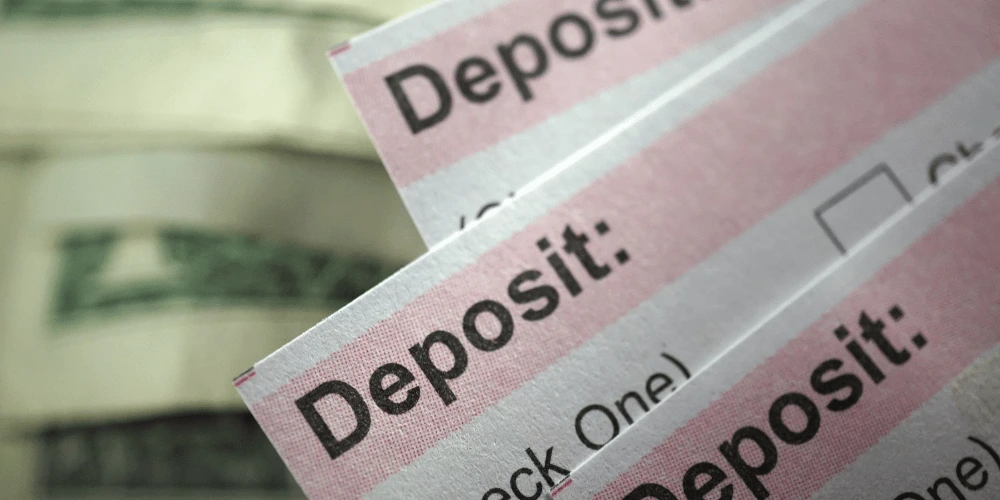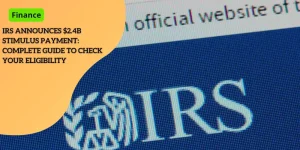How to Track Your IRS Tax Refund: Step-by-Step Guide for Fast Returns

Anúncios
Understanding IRS Tax Refunds: What You Need to Know
Overview of the IRS Tax Refund Process and Its Importance
The IRS tax refund process is a vital annual event for many Americans.
The refund is essentially a return of excess taxes paid to the government throughout the year.
Anúncios
These refunds can provide a significant financial boost, helping many individuals and families balance their budgets or make essential purchases.
The process begins when you file your tax return and ends when you receive your refund, which can be in the form of a direct deposit or a mailed check.
Anúncios
Impact of Tax Refunds on Americans’ Financial Well-being
Tax refunds have a notable impact on the financial well-being of Americans.
A survey by Intuit Credit Karma found that over a third of taxpayers rely on these refunds to make ends meet.
This dependence is even more significant among millennials, with 50% relying on their refunds for financial stability.
Money from tax refunds often goes towards essential expenses such as housing, groceries, and other necessities.
Given the rising cost of living and inflation, tax refunds serve as an important financial lifeline for many.
Key Factors That Influence Refund Processing Times
Several factors can influence the time it takes for the IRS to process your refund:
- 💵 Filing Method: Electronic filing typically results in a faster refund than mailing a paper return.
- 💵 Direct Deposit: Opting for a direct deposit is quicker than waiting for a mailed check.
- 💵 Accuracy of the Return: Inaccurate or incomplete returns can delay processing.
- 💵 IRS Volume: Peak filing periods can result in longer processing times due to the increased number of returns the IRS needs to handle.
- 💵 Additional Reviews: If the IRS flags your return for further review or requires additional information, this can also cause delays.
Understanding these factors can help set your expectations and allow you to take necessary steps to potentially expedite the refund process.
To ensure a smooth refund experience, it is crucial to file your return accurately and choose electronic filing with direct deposit if possible.
By doing so, you can reduce the processing time and get your refund faster.
Up next, we’ll delve into the expected timeline for receiving your tax refund and the various methods available for tracking its status.
 Choose the refund method
Choose the refund method
Expected Timeline for Your Tax Refund
Electronic Filing with Direct Deposit: Less Than 3 Weeks
If you choose to electronically file your tax return and opt for direct deposit, the IRS states that you should receive your refund in less than three weeks.
This is because electronic filing significantly reduces the processing time as your return is received and processed much faster than a paper return.
Additionally, direct deposit ensures that your refund is transferred directly into your bank account, eliminating the wait time associated with mail delivery.
Paper Filing Timeline: 6-8 Weeks for Processing
For those who prefer the traditional method of mailing a paper tax return, the processing time is considerably longer.
The IRS estimates that it can take about six to eight weeks from the date they receive your paper filing to process your refund.
This extended timeline is due to the additional steps involved in manually handling and inputting the data from your paper forms.
Factors That Might Delay Your Refund
Several factors can delay the processing of your tax refund, regardless of whether you file electronically or by paper:
- 💵 Errors on Your Return: Mistakes such as incorrect Social Security numbers, misspelled names, or inaccurate bank details can cause delays.
- 💵 Incomplete Information: Missing information or required forms can slow down the processing.
- 💵 Identity Verification: If there are concerns about identity theft or fraud, the IRS may take extra measures to verify the information provided.
- 💵 Additional Reviews: Sometimes, the IRS selects certain returns for additional review, which can extend the processing time.
- 💵 COVID-19 Impact: The ongoing pandemic may still affect IRS staffing and processing capacity, leading to longer wait times.
Understanding these timelines and potential delays can help you anticipate when to expect your refund and plan accordingly.
If issues arise, remember there are tools and resources available to assist you in tracking and resolving any delays with your refund process.
Next, let’s explore how to efficiently track your refund using the built-in IRS tools.
How to Track Your Refund Using the IRS Tool
Step-by-Step Guide to Accessing the ‘Where’s My Refund?’ Tool
Tracking your tax refund doesn’t have to be a mystery.
The IRS provides a convenient tool called ‘Where’s My Refund?’ to help you keep tabs on your refund status. Here’s how to use it:
| Step | Action | Details |
|---|---|---|
| Visit IRS Website | Go to the IRS “Where’s My Refund?” page | Ensure you have your details ready to track |
| Enter Required Information | Enter your SSN, filing status, and refund amount | Check for any discrepancies |
| Monitor Refund Status | Check status regularly (updates once a day) | Expect your refund within the expected timelines |
Required Information
When tracking your refund, be prepared with the following:
- 💵 Social Security Number (SSN) or ITIN: This is essential for verifying your identity.
- 💵 Filing Status: Indicate your filing status accurately to ensure the correct validation.
- 💵 Exact Refund Amount: Use the exact amount listed on your tax return to avoid any mismatch issues.
Understanding the Daily Update Cycle of the Tracking System
The ‘Where’s My Refund?’ tool updates once a day, typically overnight.
This means you can check your refund status every 24 hours, and new information will be available after each update:
- 💵 E-Filed Returns: Information is usually available within 24 hours after the IRS receives your e-filed return.
- 💵 Paper Returns: Data may take up to four weeks after mailing to become available.
Once your refund is marked as sent, it may take up to five days to appear in your bank account if you opted for direct deposit.
For those receiving a check, it may take several weeks for delivery.
By using this tool, you have a reliable resource for monitoring your refund, easing some of the uncertainty during tax season.
Make sure to check it regularly and keep the required information handy for the best experience.
So, what’s the next step if you’ve tracked your refund and it’s been approved?
After Your Refund is Approved
Once your refund is approved by the IRS, you can finally breathe a sigh of relief.
But knowing when and how you’ll receive your money can be just as important.
Here’s what you need to expect for both direct deposits and mailed checks.
Timeline for Funds to Appear in Your Bank Account
If you opted for direct deposit when you filed your taxes electronically, the good news is that the process is relatively quick.
After the IRS marks your refund as sent, it typically takes up to five business days for the funds to appear in your bank account.
Make sure to monitor your account closely during this window to ensure everything goes smoothly.
Mailed Check Delivery Expectations
For those who chose to receive a paper check, the wait can be a bit longer.
Once the IRS issues your refund, expect it to take several weeks for the check to arrive via mail.
The timeline can vary depending on the efficiency of postal services and other logistical factors.
What to Do If You Encounter Issues with Your Refund
Sometimes things don’t go as planned, and you might face issues with your refund. Here’s how to handle common problems:
- Refund Not Received: If the expected time has passed and you haven’t received your refund, use the? tool to check for any updates or issues.
- IRS Requests More Information: If there’s an issue with your return that requires more details or review, the IRS will send you a letter. Promptly respond to any requests to avoid further delays.
- Bank Account Errors: Ensuring that your bank account information is correct when filing is critical. If there is an error and your direct deposit is returned to the IRS, they will issue a paper check instead, which will naturally take more time.
- Lost or Stolen Check: If your check is lost or stolen, report it to the IRS as soon as possible. The IRS can place a trace on the check to determine its status, and if necessary, issue a replacement.
Understanding these steps can significantly ease the anxiety associated with waiting for your tax refund.
Lastly, it’s always wise to keep an eye on the bigger picture and be prepared for any hiccups in the process.
Troubleshooting Refund Delays
Common Reasons for Refund Delays
Despite the IRS’s efficient processing systems, several factors can contribute to delayed refunds. Some of the most common reasons include:
- Errors on Your Tax Return: Simple mistakes such as incorrect Social Security numbers, misspelled names, or wrong bank account numbers can hinder the processing of your refund.
- Incomplete Information: Missing pertinent information like W-2s, 1099s, or other required documents can delay processing.
- Identity Theft or Fraud: If the IRS suspects identity theft or fraudulent activity, they will place a hold on your refund until the issue is resolved.
- Additional Review: Some returns may require additional review and verification due to complex tax situations or unusual activity.
- Amendments to Your Return: If you’ve filed an amended return, expect an extended processing time as the IRS reviews the changes.
How to Respond to IRS Information Requests
If the IRS needs more information, they will send a letter detailing what is required. Here are some steps to follow:
- Read the Letter Carefully: Understand what is being requested and why.
- Gather the Necessary Documents: Collect and organize all requested documentation promptly.
- Respond Timely: Ensure you respond within the specified time frame to avoid further delays.
- Provide Clear Copies: Make sure the copies of your documents are clear and legible.
- Contact the IRS if Needed: If you have questions or need clarification, contact the IRS directly using the contact information provided in the letter.
When to Seek Additional Assistance
Sometimes, it may be necessary to seek additional help if your refund is delayed significantly or if you encounter complexities that you cannot resolve on your own:
- 💵 Taxpayer Advocate Service (TAS): This is an independent organization within the IRS that helps taxpayers resolve issues that the IRS has not addressed timely or adequately.
- 💵 Certified Public Accountant (CPA) or Tax Professional: For complicated tax issues, consulting with a CPA or tax professional can provide guidance and help in ensuring your return is accurate and compliant.
- 💵 IRS Hotline: For issues you’re unable to resolve online or via correspondence, you can call the IRS at the number provided in your communication from them.
Handling refund delays can be frustrating, but staying informed and responsive can help smoothen the process significantly.




![Capital Gains Tax on Real Estate: What Home Sellers Need to Know [Complete Guide] Capital Gains Tax on Real Estate What Home Sellers Need to Know [Complete Guide]](https://snewdigi.com/wp-content/uploads/2024/12/Capital-Gains-Tax-on-Real-Estate-What-Home-Sellers-Need-to-Know-Complete-Guide-300x150.webp)


